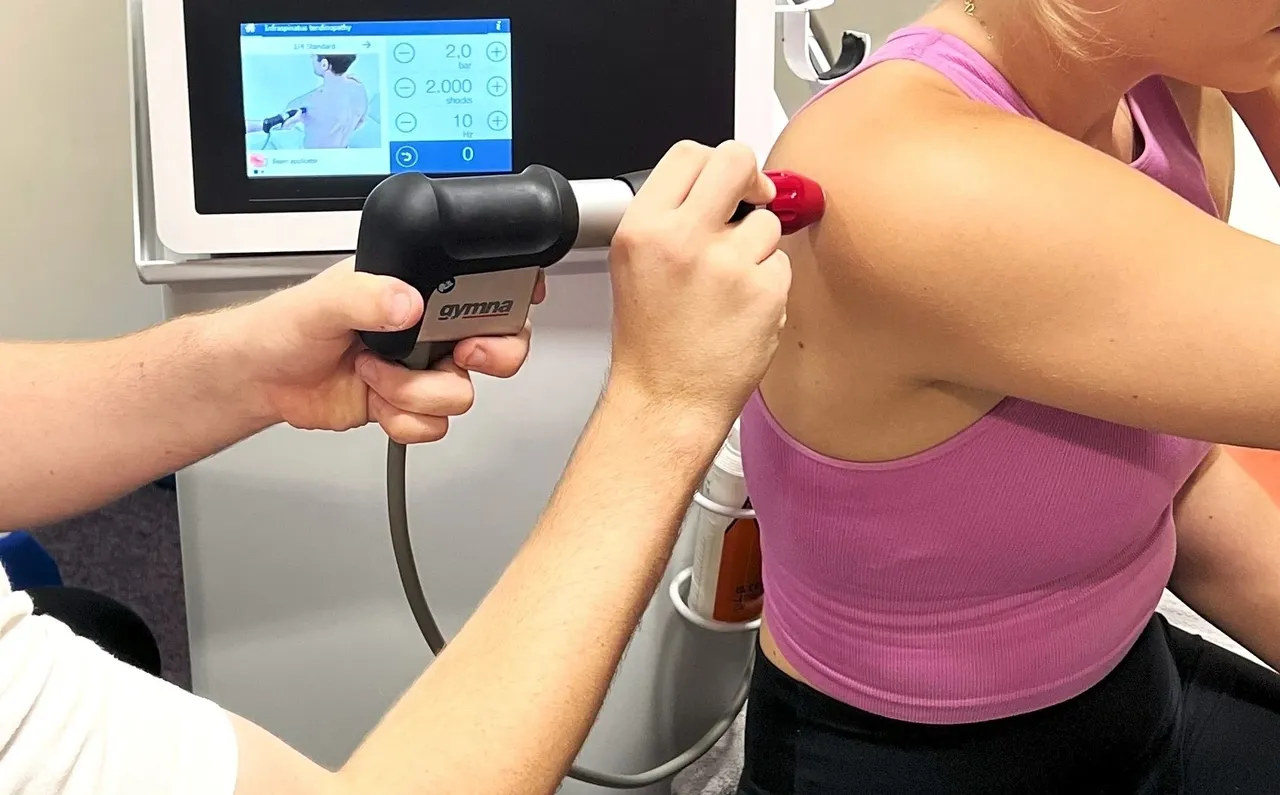Frozen Shoulder (Adhesive Capsulitis)
Understanding Frozen Shoulder
What is Frozen Shoulder?
Frozen shoulder, also known as adhesive capsulitis, is a condition characterized by stiffness, pain, and limited range of motion in the shoulder joint. This condition typically progresses through three stages: the freezing stage, where pain increases and movement becomes difficult; the frozen stage, where pain may diminish but the shoulder remains stiff; and the thawing stage, where movement gradually improves. The entire process can take anywhere from several months to a couple of years.
What Causes Frozen Shoulder?
The exact cause of frozen shoulder is not fully understood, but several factors are believed to contribute to its development:
- Injury or Surgery: Shoulder injuries or surgeries can lead to immobility, which increases the risk of developing frozen shoulder.
- Medical Conditions: Certain medical conditions, such as diabetes, cardiovascular disease, and thyroid disorders, are associated with a higher incidence of frozen shoulder.
- Prolonged Immobilization: Keeping the shoulder immobile for extended periods, whether due to injury, surgery, or another reason, can lead to the development of this condition.
- Inflammation: Inflammation and subsequent thickening and tightening of the shoulder capsule can restrict movement and cause pain.


Recurrence of Frozen Shoulder
Increased Risk of Recurrence
Individuals who have experienced frozen shoulder in one shoulder are at a higher risk of developing the condition in the same or the opposite shoulder. Research indicates that approximately 20-30% of people with frozen shoulder may experience it again in the other shoulder at some point in their lives. This increased risk could be attributed to several factors:
- Underlying Predispositions: People who have had frozen shoulder may have underlying predispositions, such as systemic inflammation or connective tissue disorders, that make them more susceptible to the condition.
- Immobilization Habits: Those who have had frozen shoulder might have adopted habits that contribute to joint stiffness or immobility, potentially affecting the other shoulder.
- Genetic Factors: Some studies suggest that genetic factors may play a role in the development of frozen shoulder, making individuals who have had the condition more likely to experience it again.
Understanding this risk can help in the early identification and management of symptoms if they arise in the opposite shoulder, allowing for timely intervention and prevention of further complications. Regular monitoring and proactive management are essential for those who have had frozen shoulder in the past.
Conclusion
Rotator cuff tendonitis, especially involving the supraspinatus muscle, can significantly impact your daily life. Effective treatment involves a combination of physiotherapy, shockwave therapy, and exercise therapy. Additional treatments like acupuncture, IASTM, and cupping can also support recovery. It is essential to approach treatment holistically and avoid relying solely on short-term solutions like cortisone injections. At Activate Physiotherapy, we are committed to providing comprehensive care to help you achieve lasting relief and improved shoulder function.
For more information or to book an appointment, contact us at Activate Physiotherapy in Brisbane. We are here to help you on your journey to recovery!
How to Make an Appointment
Making an appointment to see one of our Physiotherapists is as easy as booking online for your nearest Brisbane based Activate Physiotherapy clinic in Stafford or Tingalpa.

How to Treat Frozen Shoulder
Physiotherapy
Physiotherapy is a cornerstone in the treatment of frozen shoulder. Through targeted exercises and manual therapy techniques, a physiotherapist can help improve range of motion, reduce pain, and restore function to the shoulder. Treatment plans are tailored to each individual, focusing on gradually increasing mobility and strength.
Shockwave Therapy
Shockwave therapy, or Extracorporeal Shock Wave Therapy (ESWT), has shown promising results in treating frozen shoulder. Research suggests that ESWT can accelerate the healing process, improve quality of life, and enable a quicker return to daily activities. The high-energy shock waves stimulate blood flow and promote tissue repair, effectively reducing pain and enhancing mobility (Vahdatpour et al. 2014).
Exercise Therapy
Exercise therapy is crucial for managing and recovering from frozen shoulder. Specific exercises designed to stretch and strengthen the shoulder muscles can significantly improve range of motion and reduce stiffness. Consistent exercise under the guidance of a physiotherapist ensures safe and effective progression through the stages of frozen shoulder.
Acupuncture & Dry Needling
Acupuncture and dry needling involve inserting fine needles into specific points in the muscles to relieve pain and improve function. These treatments can reduce muscle tension, enhance blood flow, and promote the body’s natural healing processes.
Instrument Assisted Soft Tissue Mobilization (IASTM)
IASTM is a technique where special tools are used to mobilize soft tissues and break down scar tissue. This can help restore normal function and reduce pain in the shoulder.
Cupping
Cupping therapy involves placing cups on the skin to create suction. This technique can help improve blood flow, reduce muscle tension, and promote healing in the shoulder.
Should I Have Cortisone Injections?
While cortisone injections are a common treatment for reducing pain and inflammation in frozen shoulder, they may have potential drawbacks. Cortisone can cause tissue degradation over time, which might lead to more harm than benefit. It is crucial to weigh the risks and benefits with your healthcare provider before deciding on this treatment.
Will Surgery Be of Benefit for My Frozen Shoulder?
Surgery is generally considered in very rare cases of frozen shoulder. Surgical options include manipulation under anesthesia and arthroscopic capsular release, both of which aim to restore movement by releasing the tight shoulder capsule. In some cases, however there is evidence to suggest surgery and the associated build up of adhesions or scar tissue can actually worsen frozen shoulder. Whilst it might take some patience, most patients experience significant improvement with non-surgical treatments, making surgery unnecessary for many.
At Activate Physiotherapy, our team of experienced physiotherapists in Brisbane specialises in the comprehensive management of frozen shoulder. No matter which stage of frozen shoulder you are currently in our team will guide you through personalised treatment plans that may include physiotherapy, shockwave therapy, and various other modalities, we are dedicated to helping you regain shoulder function and improve your quality of life. Contact us today to schedule a consultation and start your journey to recovery.
How to Make an Appointment?
Making an appointment is as easy as clicking here to book online today or you can call your nearest clinic: Tingalpa or Stafford to discuss whether treatment is right for you.
